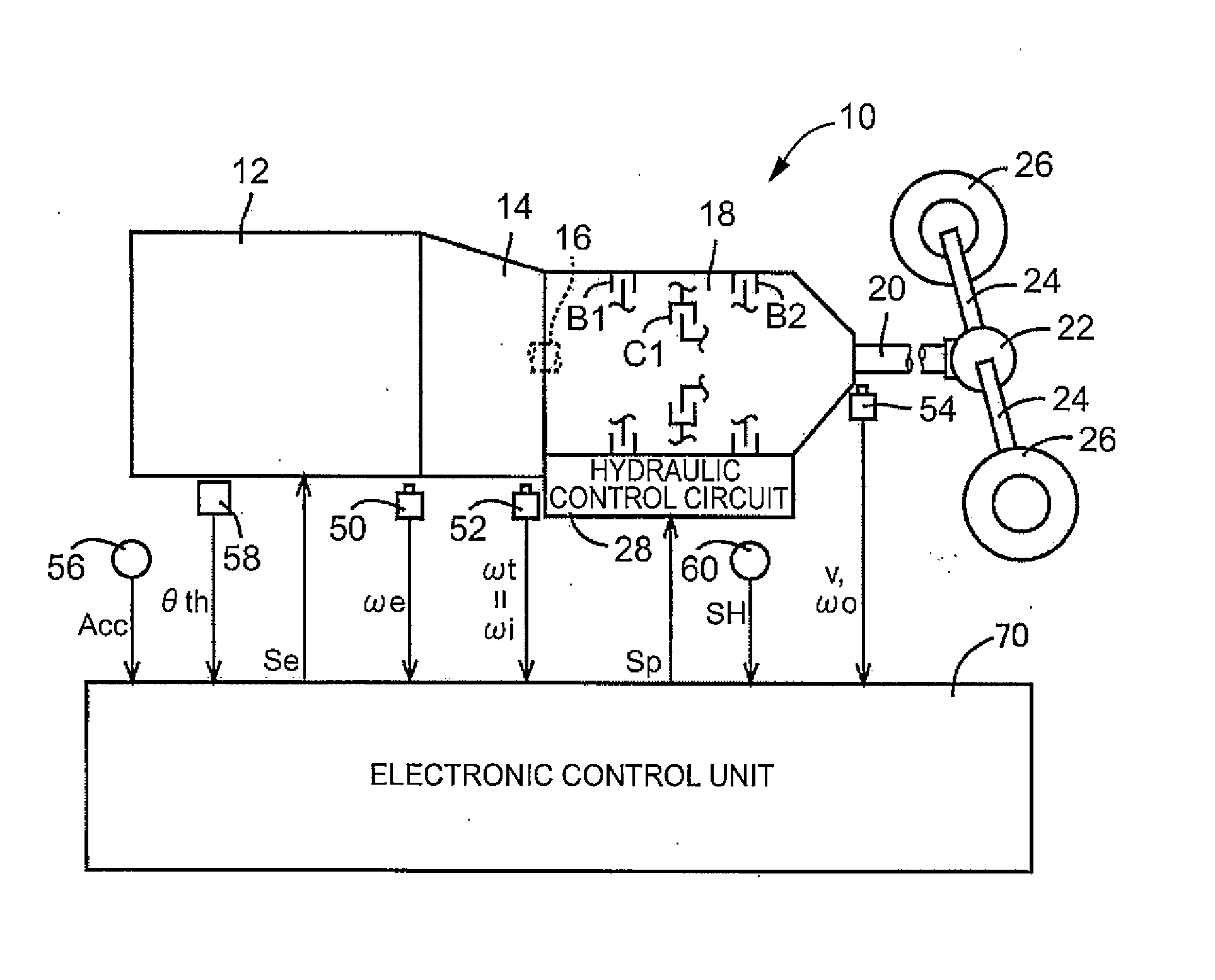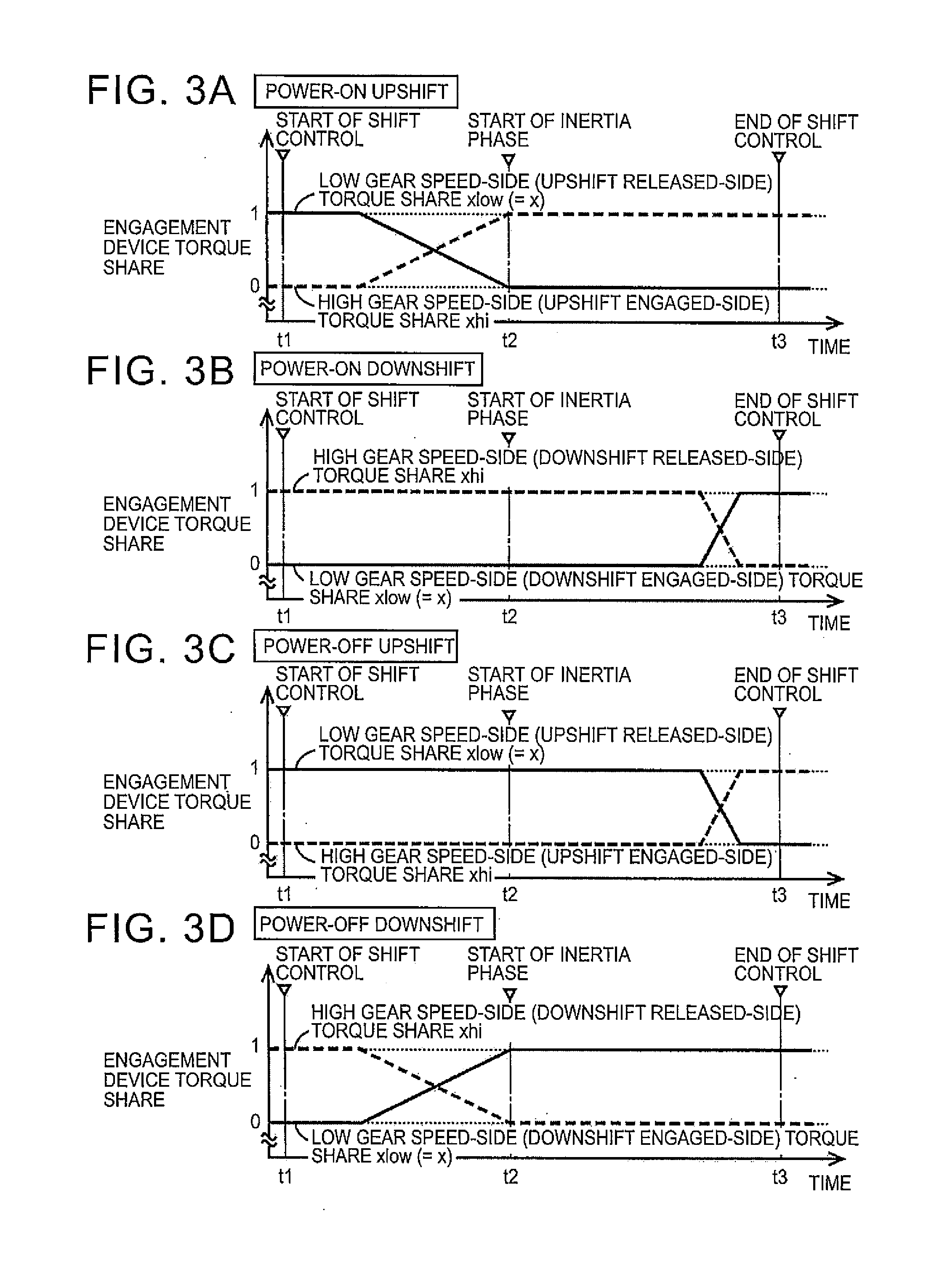Controller and control method for vehicle
a control method and vehicle technology, applied in the direction of digital data processing details, mechanical equipment, instruments, etc., can solve the problems of increasing shift shock, delay in shifting and drivability, and inability to cancel inertia torque through engine torque reduction control, etc., to suppress racing, smooth torque exchange, and suppress shift shock
- Summary
- Abstract
- Description
- Claims
- Application Information
AI Technical Summary
Benefits of technology
Problems solved by technology
Method used
Image
Examples
first embodiment
[0029]Hereinafter, an embodiment (first embodiment) of the invention will be described with reference to the accompanying drawings.
[0030]FIG. 1 is a view that illustrates the schematic configuration of a power transmission path from an engine 12 mounted on a vehicle 10, to which the invention is applied, to drive wheels 26, and is a view that illustrates a relevant portion of a control system provided in the vehicle 10. In FIG. 1, power generated by the engine 12 that serves as a driving force source is passed through a torque converter 14 and input from an input shaft 16 to the automatic transmission 18, and then transmitted from an output shaft 20 of the automatic transmission 18 to the right and left drive wheels 26 sequentially via a differential gear unit (differential gear) 22, a pair of axles (drive shafts) 24, and the like.
[0031]The automatic transmission 18 is a known planetary gear-type automatic transmission that includes a single set or multiple sets of planetary gear un...
second embodiment
[0061]Next, another embodiment (second embodiment) of the invention will be described. Like reference numerals denote mutually common portions between the embodiments in the following description, and the description thereof is omitted.
[0062]In the above-described first embodiment, as shown in the time chart of FIG. 5, the target value of the transmission output torque To during inertia phase is determined on the assumption that it is possible to cancel inertial torque in engine torque reduction control. Incidentally, there is presumably a case where only part of inertia torque can be apparently cancelled depending on the shift pattern, each pair of speeds, the vehicle speed V at the time of the shift, the state of the engine 12, and the like. Therefore, in such a case, the shift target value calculation unit 80 according to the second embodiment sets the target value of the transmission output torque To during inertia phase on the assumption that it is possible to cancel only part ...
PUM
 Login to View More
Login to View More Abstract
Description
Claims
Application Information
 Login to View More
Login to View More - R&D
- Intellectual Property
- Life Sciences
- Materials
- Tech Scout
- Unparalleled Data Quality
- Higher Quality Content
- 60% Fewer Hallucinations
Browse by: Latest US Patents, China's latest patents, Technical Efficacy Thesaurus, Application Domain, Technology Topic, Popular Technical Reports.
© 2025 PatSnap. All rights reserved.Legal|Privacy policy|Modern Slavery Act Transparency Statement|Sitemap|About US| Contact US: help@patsnap.com



